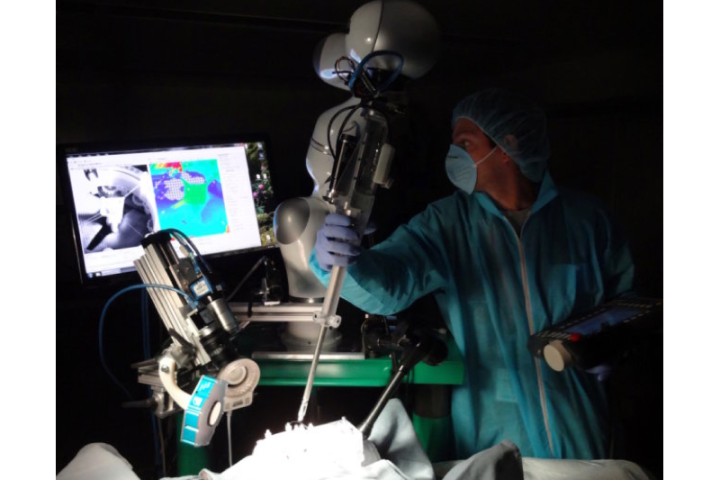
Developed by a team of doctors and scientists Sheikh Zayed Institute for Pediatric Surgical Innovation at Children’s National Health System, the Smart Tissue Autonomous Robot is capable of performing soft tissue operations on its own with minimal supervision from an attending surgeon. This autonomous procedure is a big step forward for robotic surgery, which typically uses a manually controlled robot that acts as an extension of a surgeon’s hands and not independently, as does the STAR system.
STAR has been designed from the ground up to handle the complexity of soft tissue surgery, which is employed to repair muscles, tendons, ligaments, nerves and other similar connective tissues. This type of surgery is difficult, requiring the surgeon to continually adjust his technique in response to changes in the elasticity of the tissue. Complexity aside, soft tissue surgery is a very common operation in the U.S. with more than 4.5 million soft tissue surgeries performed annually.
To handle the changing surgical conditions, STAR has been equipped with near-infrared fluorescent (NIRF) markers and 3D plenoptic vision. This technology provides a three-dimensional view of the tissue and allows the robot to detect even small changes that occur during the operation. A companion algorithm analyzes the incoming data and provides precise control over the robotic arm during suturing and other surgical functions. Force sensing, sub-millimeter positioning, and actuated surgical tools enable the robot to apply just the right amount of force to the tissue during surgery.
STAR has been used successfully in soft tissue surgeries on both dead porcine tissue and on live pigs. During trials, a surgeon was present to oversee the surgery, but the robot itself performed the soft tissue suturing autonomously. In the future, researchers hope to miniaturize the system and improve the sensors to expand the types of surgeries the system can perform.
Editors' Recommendations
- So THAT’S why Boston Dynamics retired its Atlas robot
- Dog-like Spot robot gets a gig to scare wildlife
- Texas airport to get a 420-pound security robot
- Tesla’s Optimus humanoid robot can now dance like Elon Musk
- Robot crushes man to death after mistaking him for a box




